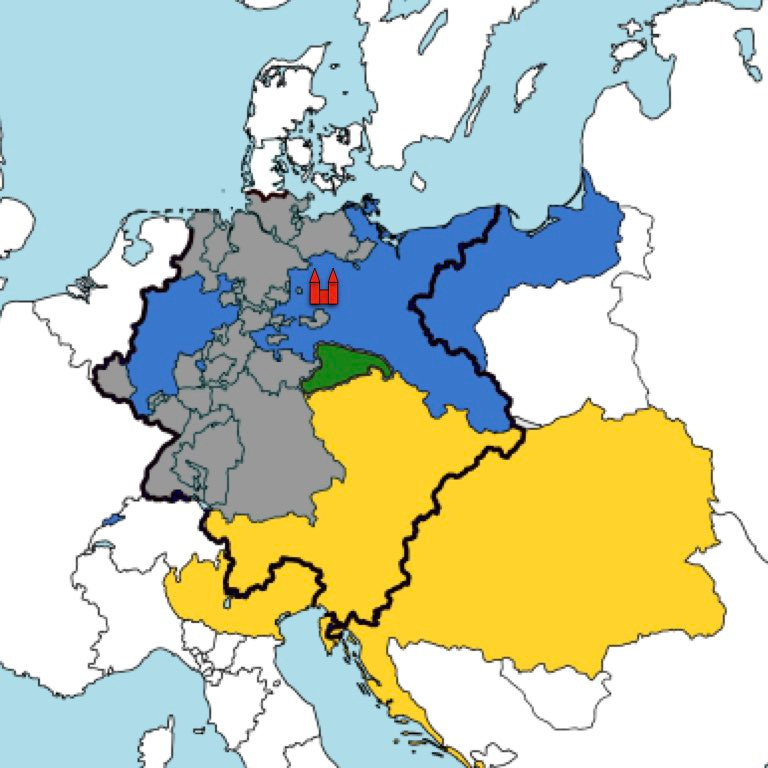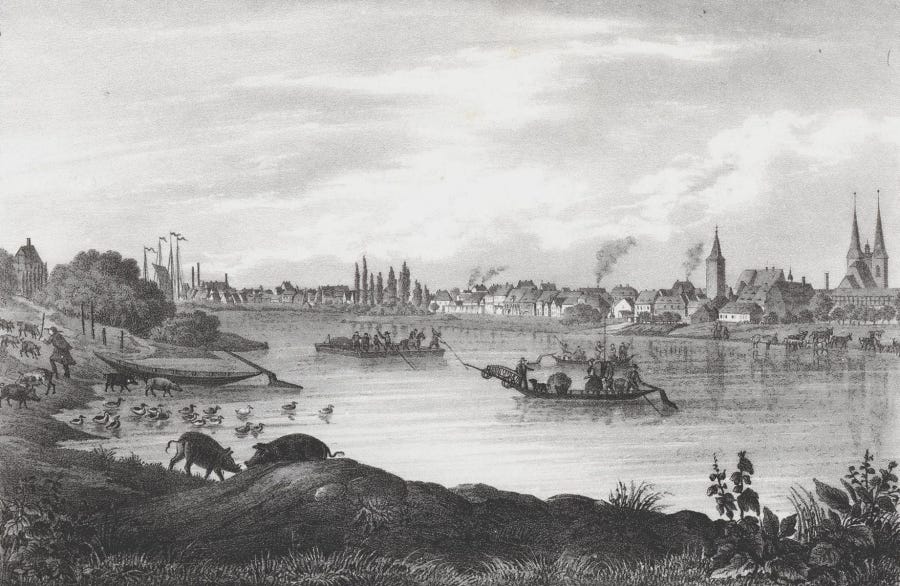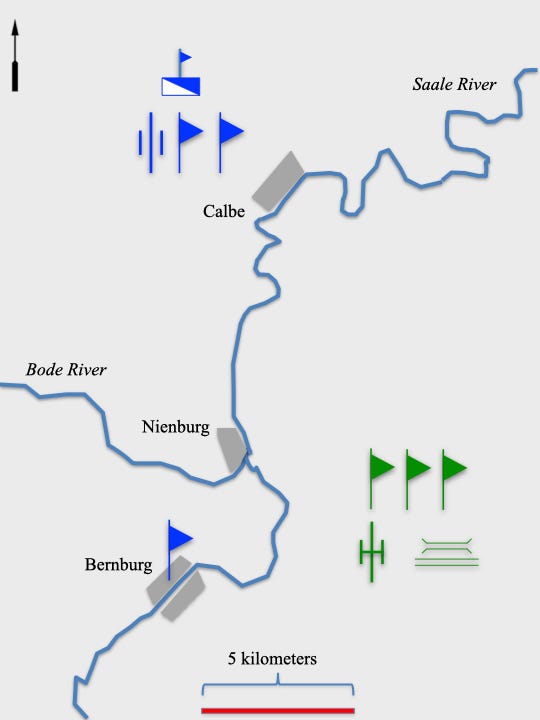Trading Places
Tactical Decision Game
The year is 1858, and you are an officer serving in the planning department of the Ministry of War of the Kingdom of Prussia. The head of your little bureau, which is largely concerned with the making of maps, the composition of contingency plans, and the writing of reports on foreign armies, has just instituted an in-house training program for you and your colleagues.
At the start of the first session of this program, your boss says “Gentlemen, today I want to imagine that you are commanding an all-arms detachment of the army of our neighbor, the Kingdom of Saxony. A few days ago, war broke out between your country (as I want you to imagine it) and Prussia. At issue in this contest is the fate of the province - known variously as “the Province of Saxony” and “Prussian Saxony” - transferred from Saxony to Prussia at the end of the Wars of Liberation against Napoleon. As you might expect, we are not alone in this war. Rather, we are part of an alliance of German states, the largest of which is Austria.

At present, you are located some twenty English miles (thirty-two kilometers) south of Magdeburg, just east of the Saale River. Your command, composed of three infantry battalions (each of one thousand men), a battery of 12-pounder gun-howitzers and a pontoon train, is serving as the advanced guard of an army corps.
The army corps, which is abut ten miles (sixteen kilometers) south of your position, has been given the mission of marching upon Magdeburg, the chief city of Prussian Saxony, in order to capture the Prussian fortress located there. The mission of your detachment is the capture of a secure crossing point over the Saale, so that the army corps can quickly cross the river and continue its march to the north.
The sympathies of the local population are divided. Some people, especially the older ones, harbor sympathies for the Saxon crown. Others, especially younger people, have been “Prussianized” by attendance at Prussian public schools, service in the Prussian Army, and pervasive Prussian influence in German cultural life.
According to information gathered by Saxon cavalry patrols, a battalion of Prussian infantry, located on the west bank of the Saale in the town of Bernberg, has prepared the old stone bridge in that town for demolition. Another Prussian force is located just west of Calbe. It is composed of three battalions of infantry (armed and organized like yours), half a squadron of cavalry (roughly seventy-five troopers), and a battery of eight six-pounder guns.
As far as you know, there are no other bridges across the Saale in this area. (There used to be railroad bridge at Calbe, but that was demolished by the Prussians.) All of the boats and ferries normally used by inhabitants to cross the river, moreover, have been moved to the west bank of that watercourse. You have no information about bridges, ferries, or boats on the Bode River.
Recently acquired, your 12-pounder gun-howitzers are superior to the Prussian 6-pounder guns in three ways. First, they are more accurate. Second, they can fire further. Third, while the 6-pounder gun is, for most purposes other than the close defense of batteries, limited to small cannon balls, the 12-pounder gun howitzer can fire explosive shells, shrapnel shells, and 12-pound solid shot.
The Prussian infantry has yet to be supplied with the famous Dreyse needle gun. Thus, the Prussian foot soldiers, like yours, are armed with muzzle-loading rifles of the type designed by Captain Minié.
The season is summer. The Saale River, which is a deep watercourse with steep banks, is fifty meters wide in most places. When assembled, the bridge carried in your pontoon train can easily span the Saale at most points along that river.
What, Sir, are your orders?
A discussion of the solutions proposed by the original players of this decision game, as well as the one offered by its designer, can be found below. In the mean time, I invite readers to use the comments section to propose solutions of their own. (Please refrain from posting spoilers!)
The map of the German Confederation was adapted from a map created by 52 Pickup and made available by means of a Creative Commons license. All other maps used in this series are the work of the author.
The figures in the table comparing the two types of artillery pieces come from Woldemar Streubel, Die 12-Pfündige Granatkanone und ihr Verhältnis zur Taktik der Neuzeit, (Kaiserslautern: Hugo Meuth, 1857), pages 171-172. The targets used in the test were pieces of cloth that were 14 meters wide and 2.8 meters high.








Use the artillery to fix the Northern force NW of the Bode River. Demonstrate or just start crossing the Salle on the W side of the Bode with 2 BNs. Send the third battalion to watch the Prussian Battalion at Bernuberg and prepare to force it if the Prussian Battalion moves toward the pontoon crossing site. That gives you two shots at crossing and puts you across with the Bode R between you and the equiv Prussian force
Could you please clarify two points:
1. Is it possible to cross the river Bode without a pontoon crossing?
2. Apart from the bridge in Bernuberg, do the other two cities have bridges across the Saale river?